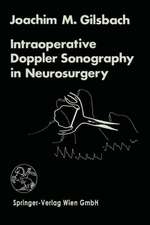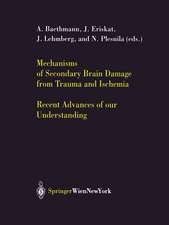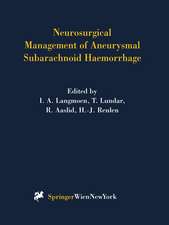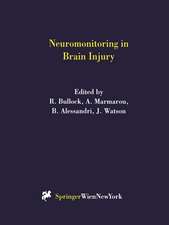CyberKnife NeuroRadiosurgery: A practical Guide
Editat de Alfredo Conti, Pantaleo Romanelli, Evangelos Pantelis, Scott G. Soltys, Young Hyun Cho, Michael Limen Limba Engleză Paperback – 9 aug 2021
| Toate formatele și edițiile | Preț | Express |
|---|---|---|
| Paperback (1) | 785.75 lei 38-44 zile | |
| Springer International Publishing – 9 aug 2021 | 785.75 lei 38-44 zile | |
| Hardback (1) | 1316.08 lei 22-36 zile | |
| Springer International Publishing – 8 aug 2020 | 1316.08 lei 22-36 zile |
Preț: 785.75 lei
Preț vechi: 827.11 lei
-5% Nou
Puncte Express: 1179
Preț estimativ în valută:
150.37€ • 156.41$ • 124.14£
150.37€ • 156.41$ • 124.14£
Carte tipărită la comandă
Livrare economică 09-15 aprilie
Preluare comenzi: 021 569.72.76
Specificații
ISBN-13: 9783030506704
ISBN-10: 3030506703
Pagini: 588
Ilustrații: XVI, 588 p. 147 illus., 120 illus. in color.
Dimensiuni: 178 x 254 mm
Ediția:1st ed. 2020
Editura: Springer International Publishing
Colecția Springer
Locul publicării:Cham, Switzerland
ISBN-10: 3030506703
Pagini: 588
Ilustrații: XVI, 588 p. 147 illus., 120 illus. in color.
Dimensiuni: 178 x 254 mm
Ediția:1st ed. 2020
Editura: Springer International Publishing
Colecția Springer
Locul publicării:Cham, Switzerland
Cuprins
Creating the Future.- CyberKnife Warfare in America: Battles at the Border Between Neurosurgery and Radiation Oncology.- The CyberKnife Robotic Radiosurgery System.- The Target Locating System for CyberKnife NeuroRadiosurgery.- Treatment Planning.- Small Field Dosimetry.- Quality Control.- Morphological Imaging.- Functional Imaging.- Diffusion Tensor Imaging (DTI) tractography.- Metabolic Imaging.- Radiobiology of Radiosurgery and Hypofractionated Treatments.- Organs at Risk (OAR) Tolerance in Hypofractionated Radiosurgery.- Brain Metastasis: Therapeutic, Diagnostic and Strategic Considerations.- Brain Metastasis: The Experience of the Burdenko Institute of Neurosurgery.- Multiple Brain Metastases.- Large Metastases and Tumor Bed.- Parasagittal and Convexity Meningiomas.- Skull Base Meningiomas.- High Grade Meningiomas and Hemagiopericytomas.- Perioptic Meningiomas.- Optic Nerve Sheath Meningiomas.- Vestibular Schwannomas.- Large Vestibular Schwannomas.- Pituitary Adenomas.- Craniopharyngiomas.- Malignant Gliomas.- Pilocytic Astrocytomas.- Pineal Tumors.- Reirradiation of Skull Base Tumors.- Chordomas and Chondrosarcomas.- Paragangliomas of Head and Neck.- Paragangliomas: a case series from Burdenko Institute.- Brainstem Tumors.- Uveal Melanoma.- Pediatric Radiosurgery.- Immunotherapy and Radiosurgery.- Spinal Metastases.- Reirradiation of Spinal Metastases.- Benign Spinal Tumors.- Intradural Spinal Lesions.- Cerebral Arteriovenous Malformations.- Large Arteriovenous Malformations.- Cerebral Cavernous Malformations.- Dural Arteriovenous Fistulas.- Cavernous Sinus Hemangiomas.- Trigeminal Neuralgia.- Movement Disorders.- Epilepsy.- Psychiatric/Behavioral Disorders.
Recenzii
“The current book would be helpful for people desiring to understand radiosurgery for neurosurgical disorders, in particular when using CyberKnife. We would suggest a critical view of what is presented in every chapter, for the maximum benefit of the reader. … We congratulate the authors on putting together the first ever book on CyberKnife neuro-radiosurgery.” (Constantin Tuleasca and Marc Levivier, Neurosurgery, Vol. 2 (1), 2021)
Notă biografică
Alfredo Conti is an Associate Professor of Neurosurgery at the University of Bologna, Italy and resident researcher at the Charité Faculty of Medicine, Berlin, Germany. In 20 years of academic activity, Dr. Conti has published more than 200 international papers , most in the field of stereotactic and functional neurosurgery.
Evangelos Pantelis is an Assistant Professor at the Medical Physics Laboratory, Medical School National and Kapodistrian University of Athens (Gr). He was EU Marie Curie stipend fellow at the Dept. οf Medical Physics & Engineering at the Johann Wolfgang Goethe Universität, Germany. His research interests include quality assurance in brachytherapy, radiosurgery and IMRT radiation therapy applications. With experience in robotic radiosurgery dating back to 2010, he has authored more than 50 international papers.
Pantaleo Romanelli is Scientific Director for Brain Radiosurgery at the Cyberknife Center, Centro Diagnostico Italiano (CDI), Milan, Italy. He has an extensive experience in CyberKnife radiosurgery dating back to early 2000. He started his training at New York University in 2001 and completed his stereotactic and functional neurosurgery training at Stanford (Ca, USA), as part of the team that developed the CyberKnife. He was then consultant for several CyberKnife Centers worldwide, Consulting Professor at the Department of Neurosurgery at Stanford University (USA) and Scientist at the European Synchrotron Radiation Facility, (Grenoble, FR). He has published more than 100 papers.
Scott G. Soltys is Associate Professor of Radiation Oncology at the Department of Radiation Oncology, Stanford University Cancer Center (USA). He has authored a number of fundamental articles on the clinical applications of Cyberknife and, as a member of Stanford team he contributed to the development of some of the most innovative applications of Cyberknife. His clinical and research interests focus on the development of new radiation techniques involving stereotactic radiosurgery and radiotherapy for the treatment of malignant and benign tumors of the brain and spine and functional disorders such as trigeminal neuralgia.
Young Hyun Cho is an Associate Professor of Neurosurgery at the Department of Neurological Surgery, Asan Medical Center, Seoul, South Korea. With over 10 years of experience in stereotactic radiosurgery (Cyberknife and Gamma Knife), he has authored more than 50 papers. He has interest and expertise in neuro-oncology, radiobiology, small animal models for stereotactic radiosurgery, and image fusion.
Michael Lim is a Professor of Neurosurgery, Oncology, Otolaryngology, Radiation Oncology and Radiation Molecular Sciences at The Johns Hopkins University School of Medicine (Baltimore, USA). He was part of the Stanford team that developed the CyberKnife in the early 2000’s. In addition totreating spinal tumors, he is an expert on the treatment of brain tumors, arteriovenous malformations, and trigeminal neuralgia with radiosurgery. Dr. Lim's primary research interest involves immune-based therapies for brain tumors. He authored more than 200 scientific publications and tens of book chapters.
Evangelos Pantelis is an Assistant Professor at the Medical Physics Laboratory, Medical School National and Kapodistrian University of Athens (Gr). He was EU Marie Curie stipend fellow at the Dept. οf Medical Physics & Engineering at the Johann Wolfgang Goethe Universität, Germany. His research interests include quality assurance in brachytherapy, radiosurgery and IMRT radiation therapy applications. With experience in robotic radiosurgery dating back to 2010, he has authored more than 50 international papers.
Pantaleo Romanelli is Scientific Director for Brain Radiosurgery at the Cyberknife Center, Centro Diagnostico Italiano (CDI), Milan, Italy. He has an extensive experience in CyberKnife radiosurgery dating back to early 2000. He started his training at New York University in 2001 and completed his stereotactic and functional neurosurgery training at Stanford (Ca, USA), as part of the team that developed the CyberKnife. He was then consultant for several CyberKnife Centers worldwide, Consulting Professor at the Department of Neurosurgery at Stanford University (USA) and Scientist at the European Synchrotron Radiation Facility, (Grenoble, FR). He has published more than 100 papers.
Scott G. Soltys is Associate Professor of Radiation Oncology at the Department of Radiation Oncology, Stanford University Cancer Center (USA). He has authored a number of fundamental articles on the clinical applications of Cyberknife and, as a member of Stanford team he contributed to the development of some of the most innovative applications of Cyberknife. His clinical and research interests focus on the development of new radiation techniques involving stereotactic radiosurgery and radiotherapy for the treatment of malignant and benign tumors of the brain and spine and functional disorders such as trigeminal neuralgia.
Young Hyun Cho is an Associate Professor of Neurosurgery at the Department of Neurological Surgery, Asan Medical Center, Seoul, South Korea. With over 10 years of experience in stereotactic radiosurgery (Cyberknife and Gamma Knife), he has authored more than 50 papers. He has interest and expertise in neuro-oncology, radiobiology, small animal models for stereotactic radiosurgery, and image fusion.
Michael Lim is a Professor of Neurosurgery, Oncology, Otolaryngology, Radiation Oncology and Radiation Molecular Sciences at The Johns Hopkins University School of Medicine (Baltimore, USA). He was part of the Stanford team that developed the CyberKnife in the early 2000’s. In addition totreating spinal tumors, he is an expert on the treatment of brain tumors, arteriovenous malformations, and trigeminal neuralgia with radiosurgery. Dr. Lim's primary research interest involves immune-based therapies for brain tumors. He authored more than 200 scientific publications and tens of book chapters.
Textul de pe ultima copertă
This book is a practical guide on image-guided robotic (CyberKnife®) radiosurgery of the brain and the spine. The volume introduces the radiosurgical community to the potential of image-guidance in the treatment of neurosurgical diseases including neuro-oncological, vascular and functional disorders. Principles of image-guided radiosurgery, including physics and radiobiology are considered. Each chapter provides a critical review of the literature and analyses of several aspects to offer an assessment of single and hypofractionated treatments. Based on the authors’ experience, tables or summaries presenting the treatment approaches and associated risks are included as well. Providing a practical guide to define the selection of dose, fractionation schemes, isodose line, margins, imaging, constraints to the structures at risk will support safe practice of neuroradiosurgery. This book aims to shed new light on the treatment of neoplastic and non-neoplastic diseases of the central nervoussystem using the CyberKnife® image-guided robotic radiosurgery system. It will be adopted by neurosurgery residents and neurosurgery consultants as well as residents in radiation oncology and radiation oncologists; medical physicists involved in radiosurgery procedures may also benefit from this book.
Caracteristici
Written by top researchers and practitioners in the field, from Europe, USA, Asia and Australia, it is a valuable reference guide in the field of image-guided radiosurgery Provides a summary of treatment parameters, tips, and risks at the end of each chapter to guide treatment planning Discusses treatment parameters based on a wide literature analysis, with each author providing a personal perspective























